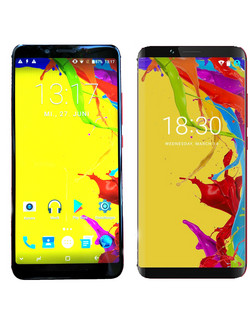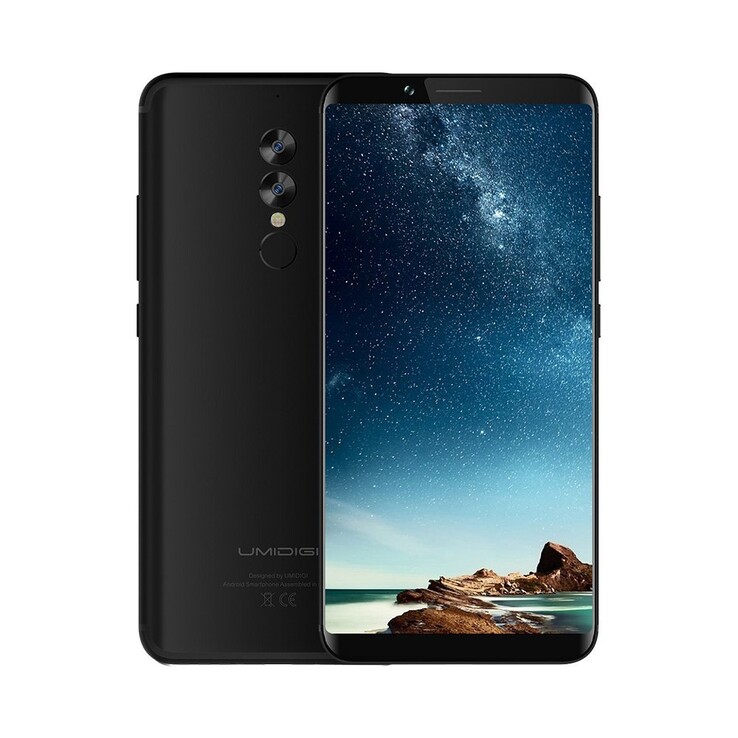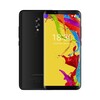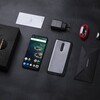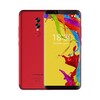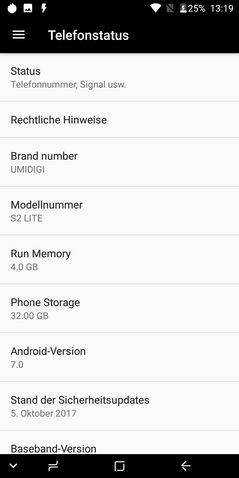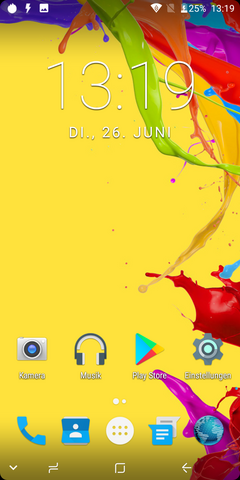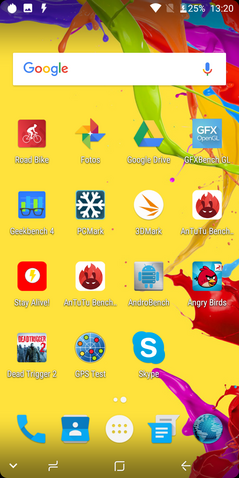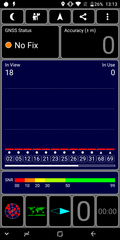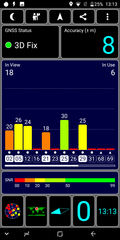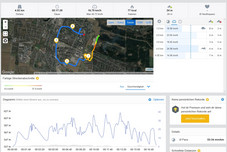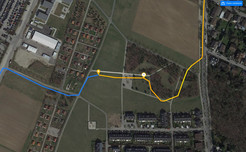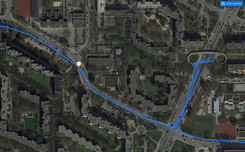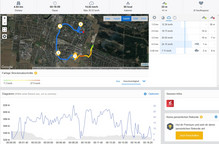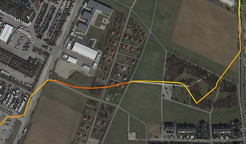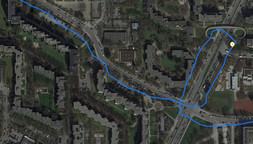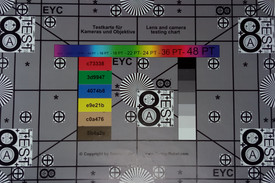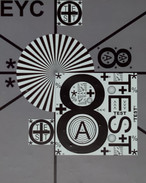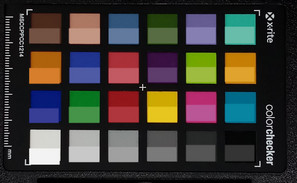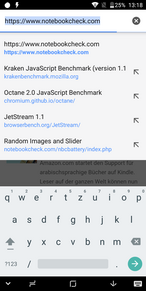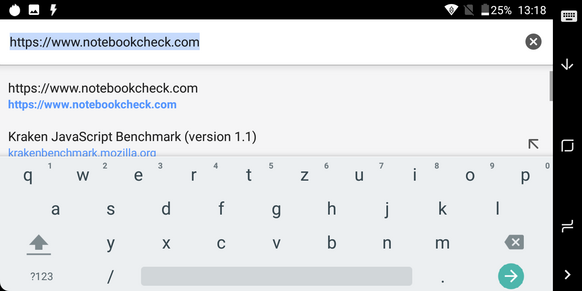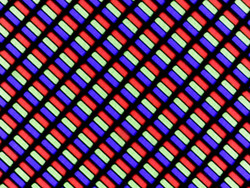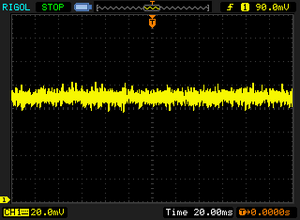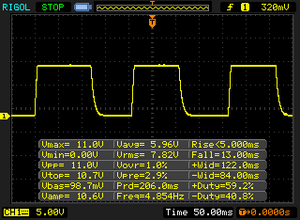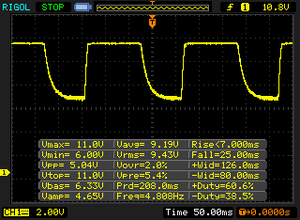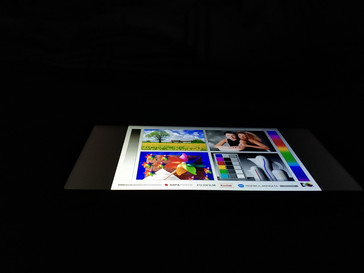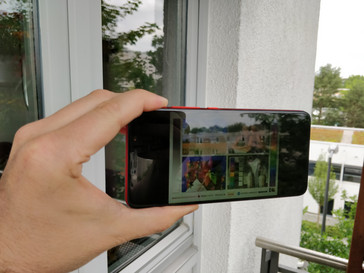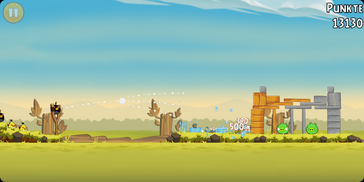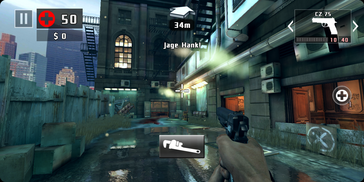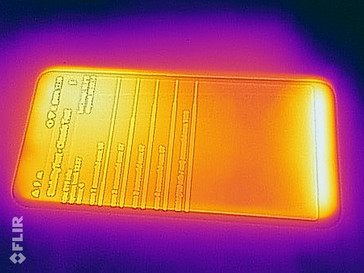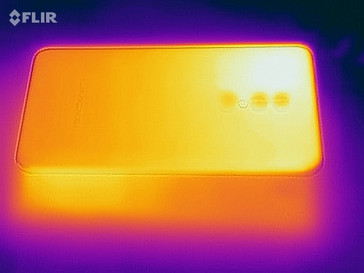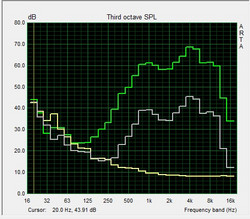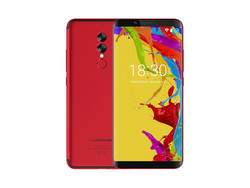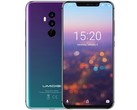UMIDIGI S2 Lite Smartphone Review
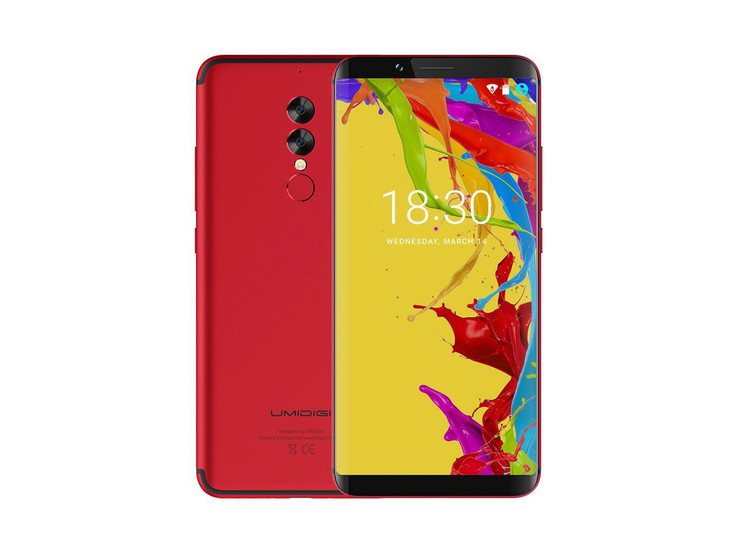
UMIDIGI is currently not a well-known smartphone manufacturer in Europe. Chinese manufacturers have continued to innovate and release spectacular smartphones, with some of the first devices with narrow display bezels coming from Chinese brands. There has been some deception surrounding the race to narrower and narrower bezels though. Manufacturers have used misleading marketing images which show that their device’s having narrower display bezels than the finished product does. Lenovo has recently come under fire for this practice. The A1 Pro demonstrated that UMIDIGI can develop good smartphones at affordable prices. Unfortunately, UMIDIGI is using this same style of misleading marketing for the S2 Lite.
The UMIDIGI S2 Lite is a large 6.0-inch phablet with a metal case, dual rear-facing cameras and incredibly narrow display bezels judging by the marketing images. Our test device has a striking red finish, but the device is available in black too. The S2 Lite costs €149 (~$174) and is available to buy from European vendors, which negates the warranty issues synonymous with buying Chinese smartphones.
We will be comparing the S2 Lite against the Huawei Y7 2018, the Xiaomi Redmi 5 Plus, Honor 7C and the Oukitel U18.
Case
Some official pictures of the S2 Lite show the device to have practically no side display bezels. These images are deceptive though as our test device has much thicker side bezels than advertised. They are narrower than those on other smartphones, but they are not as thin as UMIDIGI is marketing them to be. The S2 Lite is available in black and red, with our test device being the latter variant. Overall workmanship is good and the S2 Lite feels good in the hand thanks to its rounded edges. The S2 Lite is both relatively heavy and thick at 186 g (~6.6 oz) and 8.8 mm (~0.35 in) respectively. The device measures 158.1 mm x 74.6 mm (~6.2 x 2.9 in), which is smaller than most of our comparison devices.
The case is sturdy and cannot be twisted despite our best efforts. The display does react when we applied pressure to both the front and the back of the case though.
Connectivity
The S2 Lite has a USB Type-C port, but this is only USB 2.0 speeds rather than the much faster USB 3.1 standard. The USB Type-C port is also used for audio output as the S2 Lite has no 3.5 mm headphone jack. The S2 Lite is a Dual-SIM device that also supports up to 256 GB microSD cards. As with many devices, the S2 Lite has only two slots in its card slot. This means that you can either use two nano-SIMs or one SIM card and one microSD card, but not two nano-SIMs and a microSD card. The microSD card can be formatted as either external or internal storage, the latter of which allows apps to be stored on the microSD card. The S2 Lite has 32 GB of internal storage and 4 GB of RAM, which is impressive for a device at this price.
Software
The S2 Lite is running a near stock version of Android Nougat 7.0, which provides a better experience than other devices which have manufacturer skins on top of pure Android. Our test device is equipped with Android security patch level October 1st 2017. This is hopelessly outdated. UMIDIGI promised that they would update the S2 Lite to Android Oreo 8.1 by May, but at the time of writing this update is still yet to be rolled out.
UMIDIGI does not install any additional software on the S2 Lite, so the device is bloatware free. There is one frustrating software idiosyncrasy though. A notification pops up each time a user app is running in the background. While this is useful for energy-saving and security reasons, constantly seeing a notification on the lock screen and in the notification shade seems unnecessary. It would be better if this were managed by a central hub or something similar.
Communication & GPS
While the S2 Lite lacks IEEE 802.11 ac Wi-Fi, the device can connect to the often faster 5 GHz network if necessary. 5 GHz Wi-Fi is not guaranteed at this price either, as demonstrated by its omission from the Huawei Y7 2018. The S2 Lite performed well in our Wi-Fi tests too and was faster than our comparison devices that also support just IEEE 802.11 b/g/n Wi-Fi. In practice, websites load quickly, but often pictures take a while to appear.
The S2 Lite supports European LTE bands, but that is all. As such, the S2 Lite will struggle to connect to LTE networks when outside of Europe. Our test device has an ok mobile network signal, with typically at least half signal strength on the German D2 network when inside buildings in built-up areas.
| Networking | |
| iperf3 transmit AX12 | |
| Oukitel U18 | |
| Umidigi S2 Lite | |
| Huawei Y7 2018 | |
| Xiaomi Redmi 5 Plus | |
| Honor 7C | |
| iperf3 receive AX12 | |
| Oukitel U18 | |
| Umidigi S2 Lite | |
| Huawei Y7 2018 | |
| Xiaomi Redmi 5 Plus | |
| Honor 7C | |
The S2 Lite is equipped with GPS and GLONASS, but our test device cannot locate us indoors. Location accuracy is better outdoors, but our test device is only accurate to a moderate eight m (~26 ft).
We took the S2 Lite on a bike ride to test its location accuracy against a professional navigation device, the Garmin Edge 520. Our test device performed well, but it is far more inaccurate than the Garmin, although it managed to plot us on the correct side of the road reasonably well. The S2 Lite deviated by 280 m (~919 ft) from the Garmin, which represents a 94.3 % accuracy to the professional navigation device over around 5 km (~3.1 mi). The S2 Lite is useful for general navigation tasks, but not for more precise navigation tasks.
Phone Features & Call Quality
The S2 Lite uses the Google Phone app, which is easy to use and intuitive.
Calls sound clean and without background noise. Our counterpart comes across clearly, but the microphone is overly sensitive and our voice sounded somewhat blown out when we spoke loudly. Calls over speakerphone are also good with our counterpart coming across clearly. It is worth bearing in mind that the microphone struggled to pick out our voice if we spoke quietly.
Cameras
The S2 Lite has a dual rear-facing camera and a single front-facing camera. The main camera is a 16 MP f/2.0 aperture Omnivision OV 16880 sensor, which works with the 5 MP secondary camera to create depth of field bokeh effect photos. The 5 MP secondary camera cannot be used on its own. Overall, image sharpness and color reproduction are adequate for a device at this price, but there are some issues. There is a visible blue tint to photos and the exposure is suboptimal. Bright areas of outdoors shots are frequently overexposed and lack any detail. Pictures often come out too dark, with bright areas dominating the photo. Do not expect much from the S2 Lite in low-light conditions either.
The S2 Lite can record videos in up to 4K at 30 FPS. The picture quality is fine, with the exposure quickly adapting to changing lighting conditions. The main camera does a relatively good job at accurately reproducing colors and details too.
The S2 Lite has a 5 MP front-facing camera, the low-resolution of which is typical for a device at this price. The sharpness of photos is fine, but color reproduction is rather dull. Worse still, bright areas tend to overshadow the rest of the image, which can create ugly edges to objects.
We then tested the S2 Lite in our laboratory under controlled lighting conditions. Our test device took relatively dark pictures in these conditions too. Color reproduction is too dark overall when compared with the desired reference color. Photographs generally look muddy, with areas of color looking slightly unclean and images lacking the degree of sharpness that other similarly priced devices achieve.
Accessories & Warranty
The S2 Lite comes with a quick charger, a USB Type-A to Type-C cable and a silicone case. While the case is good at protecting the device, it makes the device feel considerably thicker. UMIDIGI also includes a USB Type-C to 3.5 mm jack adapter for connecting traditional headphones or external speakers.
There is currently no manufacturer’s warranty as UMIDIGI are just based in China. Buying the device from a European vendor will give you twenty-four months statutory warranty though. Please see our Guarantees, Return policies and Warranties FAQ for country-specific information.
Input Devices & Operation
UMIDIGI has not pre-applied a plastic screen protector to the S2 Lite as many other Chinese manufacturers tend to do with their devices. This makes the display more susceptible to micro scratches, but there are some positives. The device looks more aesthetically pleasing out of the box, and glass has a better tactility to it than plastic. The glass display has a smooth finish and the touchscreen accurately reproduces inputs even at the edge of the display.
There is a fingerprint sensor on the rear of the device that reliably unlocks the device, albeit it with a minor delay. The positioning and design of the fingerprint sensor could be better though. The sensor is the same shape as the rear-facing camera housing and sits directly below them. This meant that we mistakenly placed our finger on the bottom rear-camera rather than the fingerprint sensor. This is only a minor frustration but one which could have been rectified when designing the device.
The power button and volume rocker are on the right-hand side of the device. They are adequate, but they feel rather cheap, particularly since they have a spongy pressure point. Navigating the device is handled by the stock Android three onscreen button array that we have seen many devices incorporate.
The keyboard in landscape mode
The S2 Lite has a 6.0-inch IPS display with a 1,440x720 native resolution. The display has a relatively modern 2:1 aspect ratio too. This is frequently referred to as an 18:9 aspect ratio. The 720p display is a low resolution for a 6.0-inch display, but the S2 Lite is on par with many of our comparison devices. The Xiaomi Redmi 5 Plus is our only comparison device that has a 1080p display.
The S2 Lite has a superbly bright display. Our test device achieved a 720 cd/m² average maximum brightness when tested using X-Rite i1Pro 2. This is considerably brighter than all our comparison devices. Oddly, maximum luminosity is halved with the brightness sensor enabled. This is still sufficient for daily use though and will also help improve battery life. Our test device has 87% brightness uniformity, which is on par with most of our test devices, except for the Redmi 5 Plus. This reasonably accurate value means that there are only slight variations in brightness in large areas of color.
| |||||||||||||||||||||||||
Brightness Distribution: 87 %
Center on Battery: 344 cd/m²
Contrast: 1402:1 (Black: 0.5 cd/m²)
ΔE ColorChecker Calman: 4.97 | ∀{0.5-29.43 Ø4.77}
ΔE Greyscale Calman: 3.3 | ∀{0.09-98 Ø5}
93.8% sRGB (Calman 2D)
Gamma: 2.2
CCT: 8056 K
| Umidigi S2 Lite IPS, 1440x720, 6" | Honor 7C IPS, 1440x720, 6" | Huawei Y7 2018 IPS, 1440x720, 6" | Oukitel U18 LCD IPS, 1512x720, 5.9" | Xiaomi Redmi 5 Plus IPS, 2160x1080, 6" | |
|---|---|---|---|---|---|
| Screen | -22% | -7% | -28% | 0% | |
| Brightness middle (cd/m²) | 701 | 392 -44% | 393 -44% | 565 -19% | 620 -12% |
| Brightness (cd/m²) | 720 | 403 -44% | 365 -49% | 535 -26% | 612 -15% |
| Brightness Distribution (%) | 87 | 85 -2% | 85 -2% | 83 -5% | 96 10% |
| Black Level * (cd/m²) | 0.5 | 0.61 -22% | 0.29 42% | 0.55 -10% | 0.57 -14% |
| Contrast (:1) | 1402 | 643 -54% | 1355 -3% | 1027 -27% | 1088 -22% |
| Colorchecker dE 2000 * | 4.97 | 5.4 -9% | 5.28 -6% | 7.1 -43% | 3.46 30% |
| Colorchecker dE 2000 max. * | 13.31 | 9.7 27% | 9 32% | 13.7 -3% | 7.88 41% |
| Greyscale dE 2000 * | 3.3 | 4.2 -27% | 4.2 -27% | 6.2 -88% | 3.9 -18% |
| Gamma | 2.2 100% | 2.59 85% | 2.6 85% | 2.85 77% | 2.073 106% |
| CCT | 8056 81% | 6734 97% | 7086 92% | 7153 91% | 7230 90% |
* ... smaller is better
Screen Flickering / PWM (Pulse-Width Modulation)
| Screen flickering / PWM not detected | |||
In comparison: 53 % of all tested devices do not use PWM to dim the display. If PWM was detected, an average of 8088 (minimum: 5 - maximum: 343500) Hz was measured. | |||
The criteria for a good contrast ratio is high maximum brightness and a low black value. While the S2 Lite has the former, its black value could be better. Our test device has a 0.5 cd/m² black value. This is better than most of our comparison devices, but it pales in comparison to the Huawei Y7 2018, which achieved a 0.29 cd/m² black value during our tests. The S2 Lite still has the highest contrast ratio compared to our comparison devices though. The 1,402:1 contrast ratio makes colors pop, although colors would look far richer if the black value was lower.
We tested the S2 Lite with a spectrophotometer and CalMAN software to take a closer look at color accuracy and representation. Colors are reproduced accurately aside from some shades of blue. We are particularly impressed by the grayscale representation, which has only a minor blue tint to it.
Display Response Times
| ↔ Response Time Black to White | ||
|---|---|---|
| 18 ms ... rise ↗ and fall ↘ combined | ↗ 5 ms rise | |
| ↘ 13 ms fall | ||
| The screen shows good response rates in our tests, but may be too slow for competitive gamers. In comparison, all tested devices range from 0.1 (minimum) to 240 (maximum) ms. » 39 % of all devices are better. This means that the measured response time is better than the average of all tested devices (20.2 ms). | ||
| ↔ Response Time 50% Grey to 80% Grey | ||
| 32 ms ... rise ↗ and fall ↘ combined | ↗ 7 ms rise | |
| ↘ 25 ms fall | ||
| The screen shows slow response rates in our tests and will be unsatisfactory for gamers. In comparison, all tested devices range from 0.165 (minimum) to 636 (maximum) ms. » 42 % of all devices are better. This means that the measured response time is similar to the average of all tested devices (31.6 ms). | ||
The S2 Lite is usable outdoors thanks to its impressive contrast ratio and high maximum brightness, but only when you disable the auto brightness.
Our test device has good viewing angles too, thanks to its IPS panel. There are slight brightness shifts at acute angles, but screen content remains readable regardless of the viewing angle.
Performance
The S2 Lite is powered by a MediaTek MT6750 SoC, an older chipset that we have seen in mid-range devices. The MT6750 can now only compete with entry-level chipsets like the Qualcomm Snapdragon 430 that powers the Huawei Y7 2018. The MT6750 falls far short of the Qualcomm Snapdragon 450 and the Qualcomm Snapdragon 625 that power the Honor 7C and the Xiaomi Redmi 5 Plus respectively. System performance is reasonably smooth if you run few apps in the background. Overall, the S2 Lite is for those who do not expect or need too much from their smartphone.
The MT6750 incorporates an ARM Mali-T860 MP2 GPU, which performs reasonably well in the S2 Lite. The low-resolution display helps the S2 Lite to compete with the more powerful chipsets found in our comparison devices. The T860 MP2 supports many of the newest graphics APIs too, so that should help future-proof the S2 Lite to a certain extent.
| AnTuTu v6 - Total Score (sort by value) | |
| Umidigi S2 Lite | |
| Honor 7C | |
| Huawei Y7 2018 | |
| Xiaomi Redmi 5 Plus | |
| Average Mediatek MT6750 (38547 - 44842, n=17) | |
| AnTuTu v7 - Total Score (sort by value) | |
| Umidigi S2 Lite | |
| Honor 7C | |
| Huawei Y7 2018 | |
| Oukitel U18 | |
| Xiaomi Redmi 5 Plus | |
| Average Mediatek MT6750 (52278 - 56639, n=10) | |
| PCMark for Android | |
| Work performance score (sort by value) | |
| Umidigi S2 Lite | |
| Honor 7C | |
| Huawei Y7 2018 | |
| Oukitel U18 | |
| Xiaomi Redmi 5 Plus | |
| Average Mediatek MT6750 (3667 - 4532, n=13) | |
| Work 2.0 performance score (sort by value) | |
| Umidigi S2 Lite | |
| Honor 7C | |
| Huawei Y7 2018 | |
| Oukitel U18 | |
| Xiaomi Redmi 5 Plus | |
| Average Mediatek MT6750 (2782 - 3394, n=17) | |
| GFXBench 3.0 | |
| on screen Manhattan Onscreen OGL (sort by value) | |
| Umidigi S2 Lite | |
| Honor 7C | |
| Huawei Y7 2018 | |
| Oukitel U18 | |
| Xiaomi Redmi 5 Plus | |
| Average Mediatek MT6750 (5.6 - 13, n=17) | |
| Average of class Smartphone (18 - 166, n=157, last 2 years) | |
| 1920x1080 1080p Manhattan Offscreen (sort by value) | |
| Umidigi S2 Lite | |
| Honor 7C | |
| Huawei Y7 2018 | |
| Oukitel U18 | |
| Xiaomi Redmi 5 Plus | |
| Average Mediatek MT6750 (5.3 - 7.1, n=17) | |
| Average of class Smartphone (12 - 606, n=156, last 2 years) | |
| GFXBench 3.1 | |
| on screen Manhattan ES 3.1 Onscreen (sort by value) | |
| Umidigi S2 Lite | |
| Honor 7C | |
| Huawei Y7 2018 | |
| Oukitel U18 | |
| Xiaomi Redmi 5 Plus | |
| Average Mediatek MT6750 (3.8 - 10, n=17) | |
| Average of class Smartphone (11 - 166, n=157, last 2 years) | |
| 1920x1080 Manhattan ES 3.1 Offscreen (sort by value) | |
| Umidigi S2 Lite | |
| Honor 7C | |
| Huawei Y7 2018 | |
| Oukitel U18 | |
| Xiaomi Redmi 5 Plus | |
| Average Mediatek MT6750 (3.5 - 4.7, n=17) | |
| Average of class Smartphone (8.4 - 413, n=156, last 2 years) | |
The S2 Lite is on par with the average of our comparison devices in browser benchmarks. You will have to wait for pictures to load when web browsing, but this is still a much snappier experience than with many other budget devices.
| JetStream 1.1 - Total Score | |
| Xiaomi Redmi 5 Plus (Chrome 66) | |
| Honor 7C (Chrome 66) | |
| Umidigi S2 Lite (Chrome 67) | |
| Oukitel U18 (Chrome 65) | |
| Average Mediatek MT6750 (12 - 20.8, n=19) | |
| Huawei Y7 2018 (Chrome 66) | |
| Octane V2 - Total Score | |
| Average of class Smartphone (2228 - 126661, n=196, last 2 years) | |
| Xiaomi Redmi 5 Plus (Chrome 66) | |
| Umidigi S2 Lite (Chrome 67) | |
| Honor 7C (Chrome 66) | |
| Oukitel U18 (Chrome 65) | |
| Huawei Y7 2018 (Chrome 66) | |
| Average Mediatek MT6750 (1994 - 3506, n=19) | |
| Mozilla Kraken 1.1 - Total | |
| Oukitel U18 (Chrome 65) | |
| Average Mediatek MT6750 (11708 - 22627, n=19) | |
| Huawei Y7 2018 (Chrome 66) | |
| Umidigi S2 Lite (Chrome 67) | |
| Honor 7C (Chrome 66) | |
| Xiaomi Redmi 5 Plus (Chrome 66) | |
| Average of class Smartphone (257 - 28190, n=155, last 2 years) | |
* ... smaller is better
The S2 Lite has a slower microSD card reader in most instances than our comparison devices, but transfer speeds are adequate generally. We tested microSD card performance with our reference Toshiba Exceria Pro M501 microSD card.
Our test device has adequately fast internal storage access speeds too. The eMMC memory used is on par with our comparison devices and should be sufficient for daily use.
| Umidigi S2 Lite | Honor 7C | Huawei Y7 2018 | Oukitel U18 | Xiaomi Redmi 5 Plus | Average 32 GB eMMC Flash | Average of class Smartphone | |
|---|---|---|---|---|---|---|---|
| AndroBench 3-5 | 8% | -1% | 2% | 42% | 20% | 1663% | |
| Sequential Read 256KB (MB/s) | 271 | 297 10% | 256 -6% | 273.1 1% | 270 0% | 242 ? -11% | 2243 ? 728% |
| Sequential Write 256KB (MB/s) | 75 | 115 53% | 71.5 -5% | 109.2 46% | 194.5 159% | 100.5 ? 34% | 1865 ? 2387% |
| Random Read 4KB (MB/s) | 36.4 | 30 -18% | 38.8 7% | 28.7 -21% | 79.5 118% | 43.1 ? 18% | 296 ? 713% |
| Random Write 4KB (MB/s) | 11.6 | 10 -14% | 9.5 -18% | 12.96 12% | 7.1 -39% | 22.3 ? 92% | 339 ? 2822% |
| Sequential Read 256KB SDCard (MB/s) | 77.5 | 83.9 ? 8% | 85 10% | 71.5 ? -8% | 84.4 9% | 71.8 ? -7% | |
| Sequential Write 256KB SDCard (MB/s) | 56.5 | 62.6 ? 11% | 61.5 9% | 47.02 ? -17% | 59.5 5% | 52.9 ? -6% |
Games
The S2 Lite handles games like “Angry Birds” without issue, while more complex games like “Dead Trigger 2” even run smoothly. The S2 Lite cannot handle graphically intensive games like “PUBG Mobile” though, so we would recommend that you consider a more expensive device if that is something of importance to you.
The positional sensor and the touchscreen worked reliably and smoothly throughout our tests.
Emissions
Temperature
The S2 Lite is a relatively hot device even at idle. Our test device averaged 31.7 °C (~89 °F) on the front of the device and 30.6 °C (~87 °F) on the rear. Surface temperatures are more even on the back with the warmest area reaching 30.9 °C (~88 °F). By contrast, the area at the centre of the bottom of the display reached a maximum of 34.6 °C (~94 °F).
Surface temperatures ramp up considerably under load though, to the extent of feeling uncomfortable in your pocket or in your hand. The front of the device averaged 42.2 °C (~108 °F) with a maximum of 44.2 °C (~112 °F), while the rear of the device remained cooler at an average of 39.8 °C (~104 °F) with a maximum of 41.3 °C (~106 °F). These temperatures are still safe, but they are considerably higher than many competitor devices.
(±) The maximum temperature on the upper side is 44.2 °C / 112 F, compared to the average of 35.2 °C / 95 F, ranging from 21.9 to 247 °C for the class Smartphone.
(±) The bottom heats up to a maximum of 41.3 °C / 106 F, compared to the average of 34 °C / 93 F
(+) In idle usage, the average temperature for the upper side is 31.7 °C / 89 F, compared to the device average of 32.9 °C / 91 F.
Speakers
The S2 Lite has a single speaker on the underside of the device. Maximum volume is not particularly loud at 74.9 dB(A). The sound quality is unimpressive too, with there being a lack of deep mid or bass tones. High tones are not overemphasised either, so they are occasionally audible when listening to music over the speakers rather than being dominant.
Sound quality is clean when listening to music over headphones through the included 3.5 mm to USB Type-C adapter. The sound quality is equally as good over Bluetooth too.
Umidigi S2 Lite audio analysis
(±) | speaker loudness is average but good (74.9 dB)
Bass 100 - 315 Hz
(-) | nearly no bass - on average 25.7% lower than median
(+) | bass is linear (5.8% delta to prev. frequency)
Mids 400 - 2000 Hz
(+) | balanced mids - only 4.5% away from median
(+) | mids are linear (6.8% delta to prev. frequency)
Highs 2 - 16 kHz
(±) | higher highs - on average 8.3% higher than median
(+) | highs are linear (6.1% delta to prev. frequency)
Overall 100 - 16.000 Hz
(-) | overall sound is not linear (32.2% difference to median)
Compared to same class
» 82% of all tested devices in this class were better, 2% similar, 16% worse
» The best had a delta of 11%, average was 35%, worst was 134%
Compared to all devices tested
» 91% of all tested devices were better, 2% similar, 7% worse
» The best had a delta of 4%, average was 24%, worst was 134%
Xiaomi Redmi 5 Plus audio analysis
(+) | speakers can play relatively loud (86.9 dB)
Bass 100 - 315 Hz
(-) | nearly no bass - on average 27.3% lower than median
(±) | linearity of bass is average (11.2% delta to prev. frequency)
Mids 400 - 2000 Hz
(+) | balanced mids - only 3.4% away from median
(+) | mids are linear (3.8% delta to prev. frequency)
Highs 2 - 16 kHz
(+) | balanced highs - only 4.5% away from median
(+) | highs are linear (4.8% delta to prev. frequency)
Overall 100 - 16.000 Hz
(±) | linearity of overall sound is average (19.8% difference to median)
Compared to same class
» 31% of all tested devices in this class were better, 8% similar, 61% worse
» The best had a delta of 11%, average was 35%, worst was 134%
Compared to all devices tested
» 50% of all tested devices were better, 7% similar, 43% worse
» The best had a delta of 4%, average was 24%, worst was 134%
Battery Life
Power Consumption
The S2 Lite has comparatively good power consumption except for its maximum consumption at idle. Our test device consumes up to 3.5 W at idle, which is considerably higher than the average of MediaTek MT6750 powered devices that we have tested and all our comparison devise except for the Xiaomi Redmi 5 Plus. The extremely high display brightness explains this high idle value though.
Our test device consumes a maximum of 6.5 W under load, which averaged out to 4.6 W during our tests. This is higher than most of our comparison devices, but it is considerably lower than the Oukitel U18, while the maximum power consumption under load is slightly lower than the Redmi 5 Plus.
| Off / Standby | |
| Idle | |
| Load |
|
Key:
min: | |
| Umidigi S2 Lite 5100 mAh | Honor 7C 3000 mAh | Huawei Y7 2018 3000 mAh | Oukitel U18 4000 mAh | Xiaomi Redmi 5 Plus 4000 mAh | Average Mediatek MT6750 | Average of class Smartphone | |
|---|---|---|---|---|---|---|---|
| Power Consumption | 21% | 2% | -56% | -12% | -10% | -14% | |
| Idle Minimum * (Watt) | 0.8 | 0.6 25% | 0.9 -13% | 1.12 -40% | 0.7 12% | 1.13 ? -41% | 0.843 ? -5% |
| Idle Average * (Watt) | 1.6 | 2.16 -35% | 1.9 -19% | 2.27 -42% | 2.8 -75% | 2.02 ? -26% | 1.436 ? 10% |
| Idle Maximum * (Watt) | 3.5 | 2.24 36% | 2.3 34% | 2.49 29% | 3.4 3% | 2.42 ? 31% | 1.62 ? 54% |
| Load Average * (Watt) | 4.6 | 2.59 44% | 4.7 -2% | 10.75 -134% | 4.2 9% | 5.21 ? -13% | 7.04 ? -53% |
| Load Maximum * (Watt) | 6.5 | 4.11 37% | 5.7 12% | 12.39 -91% | 7.2 -11% | 6.56 ? -1% | 11.3 ? -74% |
* ... smaller is better
Battery Life
The S2 Lite has a 5,100 mAh battery, which counteracts the device’s comparatively high power consumption. We set all our devices at 150 cd/m² luminosity in our Wi-Fi battery life test, so the S2 Lite’s high display brightness is not a factor in this respect. Our Wi-Fi battery life test consists of running a script that simulates the load required to render websites and measuring the battery runtime. The S2 Lite lasted ten hours and forty-five minutes, which is a good runtime and considerably longer than the Redmi 5 Plus. However, this is only on par with our other comparison devices, which belies the S2 Lite’s battery capacity advantage.
In practical terms, you should expect the S2 Lite to last two working days with moderate use. Likewise, the device will last longer on a single charge if you use it less frequently.
The included quick charger takes over two hours to fully recharge our test device because of the large battery.
| Umidigi S2 Lite 5100 mAh | Honor 7C 3000 mAh | Huawei Y7 2018 3000 mAh | Oukitel U18 4000 mAh | Xiaomi Redmi 5 Plus 4000 mAh | |
|---|---|---|---|---|---|
| Battery runtime | 7% | -4% | -1% | -23% | |
| WiFi v1.3 (h) | 10.8 | 11.6 7% | 10.4 -4% | 10.7 -1% | 8.3 -23% |
| Reader / Idle (h) | 21.8 | ||||
| H.264 (h) | 11.5 | ||||
| Load (h) | 4.1 |
Pros
Cons
Verdict
The greatest disappointment with the UMIDIGI S2 Lite is that it fails to live up to its marketing images. The side bezels are far thicker than the edge-to-edge display than UMIDIGI imply on their website and in their marketing material.
These misleading marketing images are a pity as the S2 Lite is an otherwise good smartphone. The metal case is stable and stylish, while battery life is good, although the S2 Lite fails to make the best use of its huge 5,100 mAh battery. The display is spectacularly bright and eclipses far more expensive devices. The S2 Lite can even compete with smartphones designed to be used outdoors like the CAT S31. The combination of impressive screen brightness, a high contrast ratio and good color reproduction is not a given for smartphones at this price either.
The UMIDIGI S2 Lite has an extremely bright display that outshines the device’s drawbacks like its high surface temperatures under load, its outdated security patches and its misleading marketing images. Overall, the UMIDIGI S2 Lite is a strong performer at an affordable price.
The camera is below average, while the Android security patch level needs urgently updating. The promised update to Android Oreo 8.1 is overdue too, but we would never recommend relying on manufacturer promises for software updates. We would recommend buying the device from a European vendor though for the warranty coverage this affords you. Overall, the UMIDIGI S2 Lite is a very good lower mid-range smartphone.
Umidigi S2 Lite
- 06/27/2018 v6 (old)
Florian Wimmer




